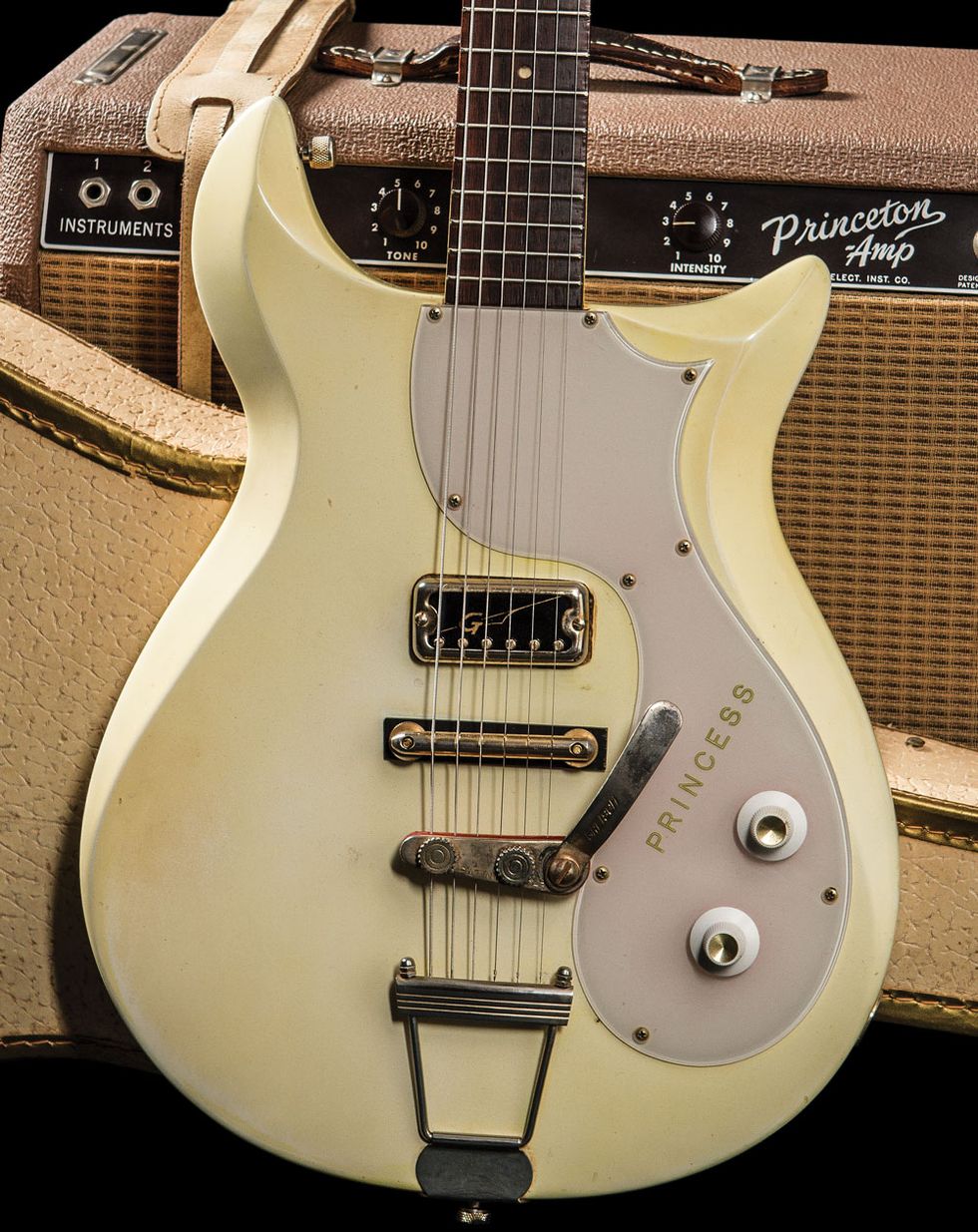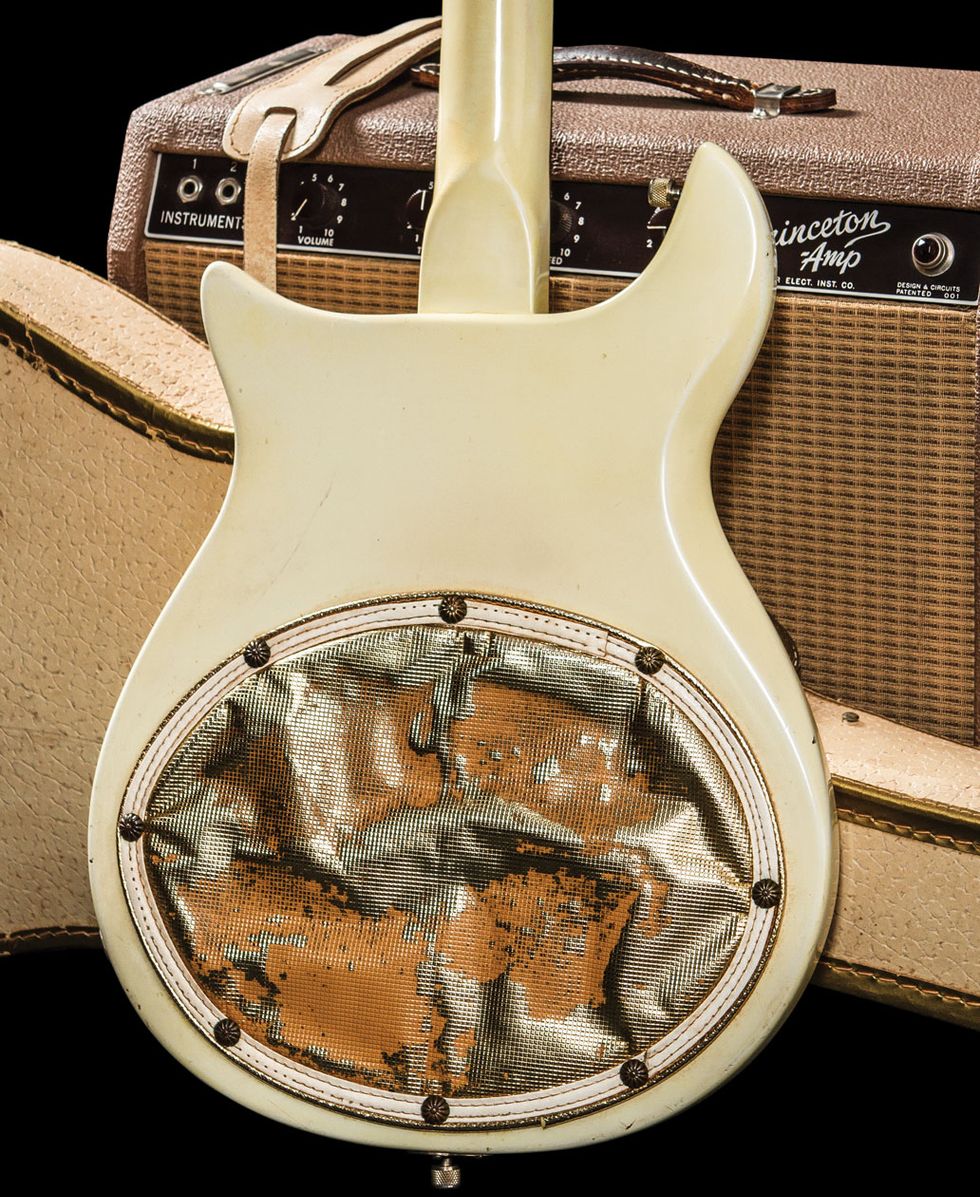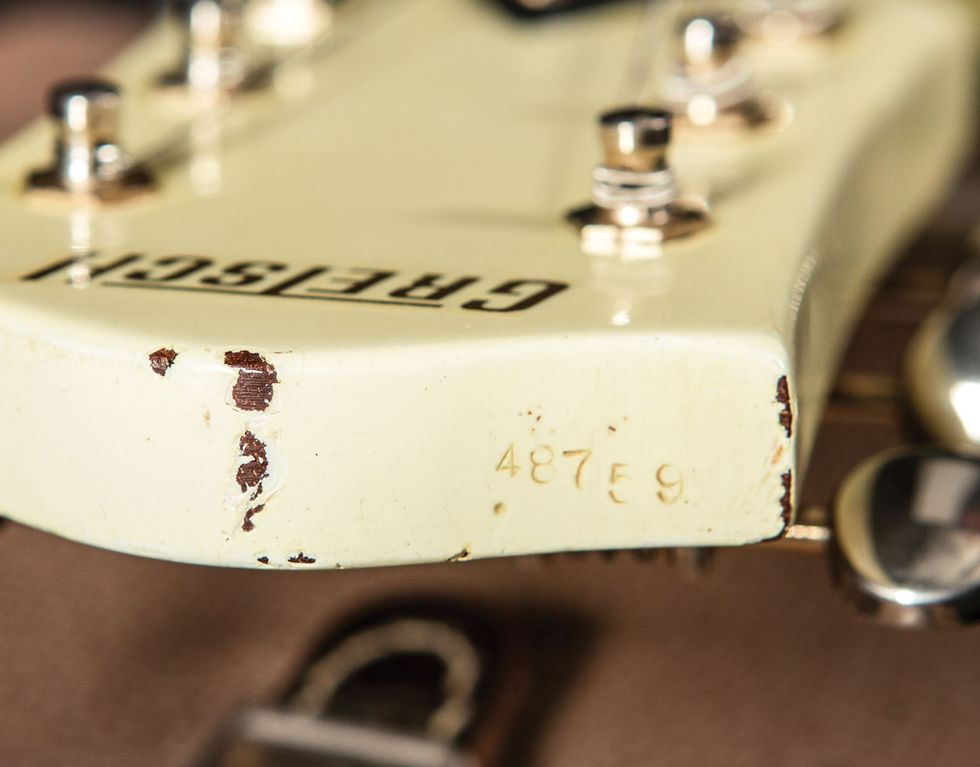By the late ’50s, Gibson was offering a few economical solidbodies—like the Les Paul Junior and Les Paul Special. The Fred Gretsch Company, seeing this was a niche they had not yet filled, created a double-cutaway solidbody called the Corvette in 1961. The earliest production guitars had flat slab bodies like a Les Paul Junior, but by 1962 they had contoured edges like Gibson’s new SG guitars.
The Tone Twister vibrato was meant for small bends rather than the epic twanging that early whammy-guitar firecrackers like Ike Turner put into tunes like 1962’s “Prancing.” Too much force on these palm vibratos caused detuning and other problems.
Gretsch came up with a variation on the contoured Corvette that same year aimed specifically at women. The new model, called the Princess, was offered in a variety of colors with hopes of appealing to feminine aesthetics. The Gretsch catalog stated: “Now for the first time, a guitar that is unmistakably ‘hers.’ When she’s out in front of others, she’ll see the admiration in their eyes.” The colors available were a white body with a grape pickguard, a blue body with a white pickguard, and a white body with a gold pickguard. The guitar and matching amp could be purchased as a set. Unfortunately, the Princess fell short of its ambition to inspire young women, and didn’t last in the Gretsch lineup beyond 1963.
The Princess came with a pad on its back. Tone purists debate the impact that these pads have on sound, with some arguing it has no effect and others claiming a slight damping.
The 1962 Gretsch Princess pictured is white with a grape-colored pickguard. The hardware is gold, including a HiLo’Tron pickup and removable Tone Twister, for light vibrato. The back pad is also gold. The catalog further described the model: “Feminine in size, light in weight, the Princess is a double cutaway solidbody guitar with carved edges. The neck is joined at the 21st fret—everything designed and scaled for her ease of playing. The white back is comfortably padded.”
A close-up view of the headstock reveals the serial number stamped in its top: 48759.
The original list price for the Princess was $169 plus $15 for the special white guitar case. The current value for one in excellent all-original condition is $1,500. The amp behind the guitar is a 1961 Fender Princeton. The brownface Princeton had many upgrades from its tweed predecessor, including two 6V6 power tubes pushing 12 watts of power through a 10" speaker, and built-in tremolo. The 1961–’62 Fender catalog proclaimed: “This radically new Fender Princeton Amplifier is a result of much effort on the part of the Fender Engineers to combine in one instrument the desirable features which have been suggested by dealers, teachers, and studio operators.” The original list price was $99.50. The current value for the amp is $2,000.
Sources for this article include 50 Years of Gretsch Electrics: Half a Century of White Falcons, Gents, Jets, and Other Great Guitars by Tony Bacon, Gretsch: The Guitars of the Fred Gretsch Company by Jay Scott, The Gretsch Book—A Complete History of Gretsch Electric Guitars by Tony Bacon and Paul Day, and Fender Amps: The First Fifty Years by John Teagle and John Sprung.










![Rig Rundown: Russian Circles’ Mike Sullivan [2025]](https://www.premierguitar.com/media-library/youtube.jpg?id=62303631&width=1245&height=700&quality=70&coordinates=0%2C0%2C0%2C0)

















